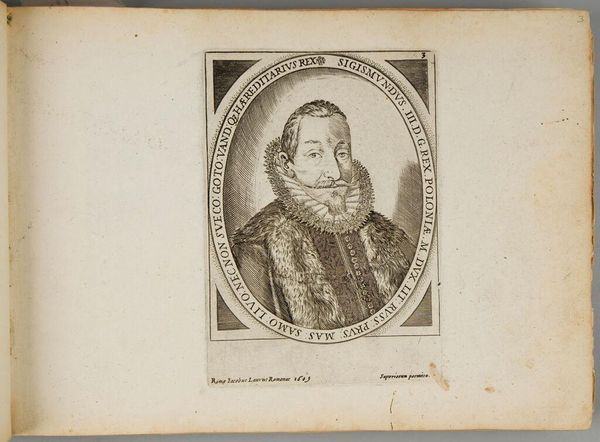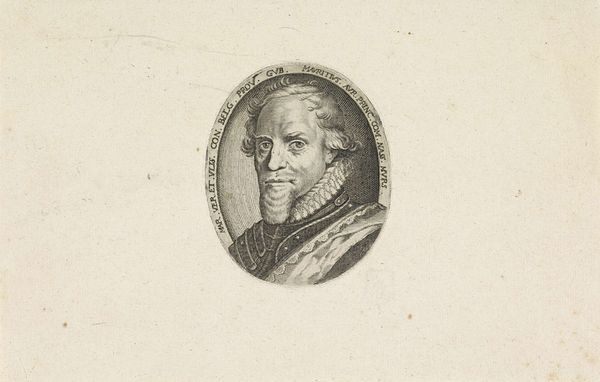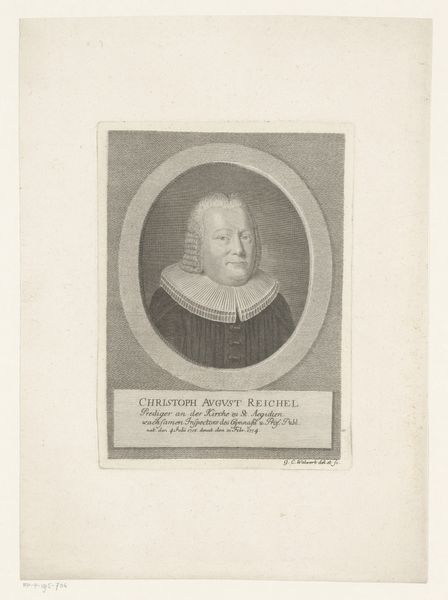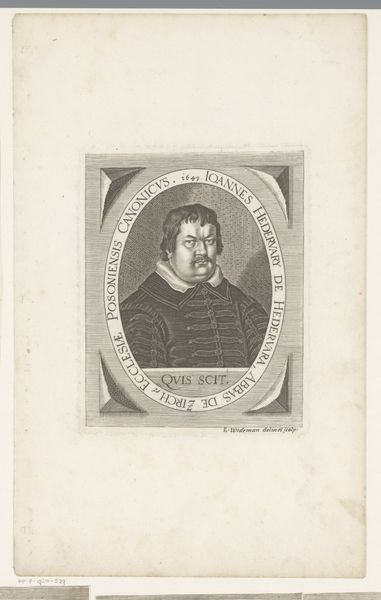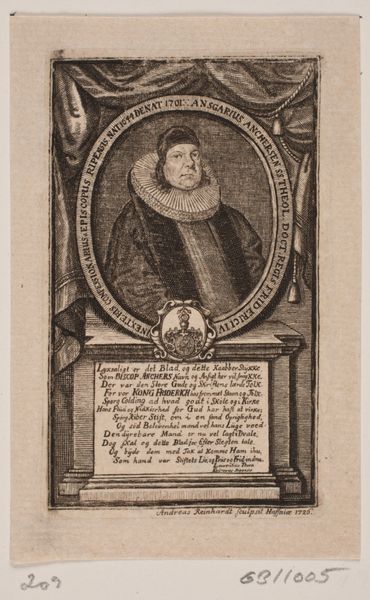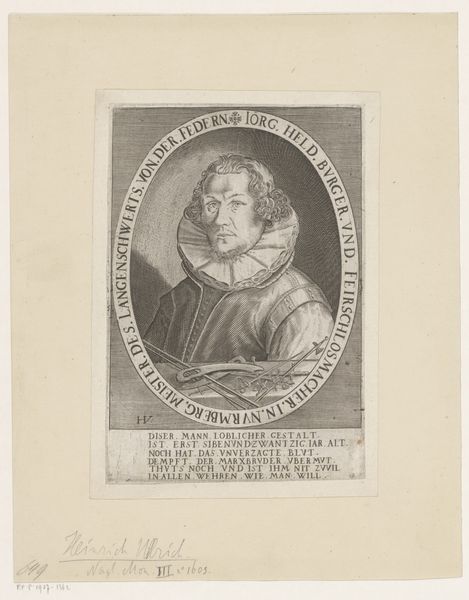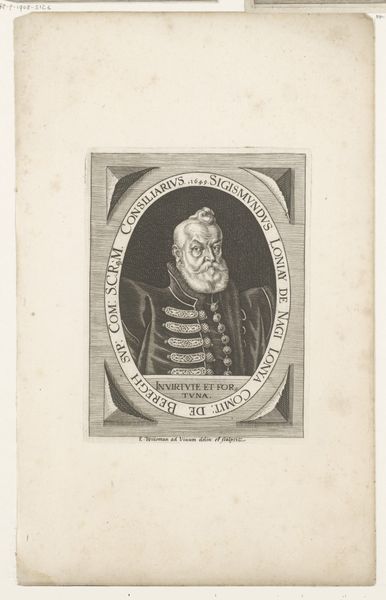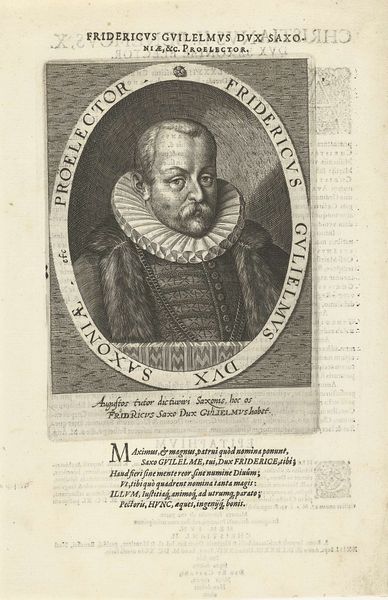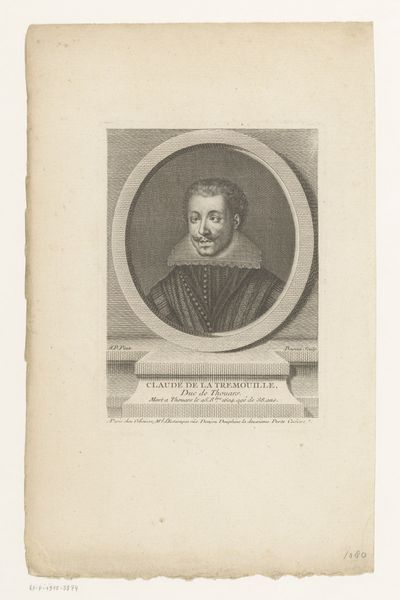
print, engraving
# print
#
old engraving style
#
11_renaissance
#
history-painting
#
northern-renaissance
#
engraving
Dimensions: height 149 mm, width 118 mm
Copyright: Rijks Museum: Open Domain
Curator: Looking at this engraving, the first thing that strikes me is the subject's solemn expression. Editor: Indeed. It sets a serious tone. I'm seeing symbols of power, of course, but the weight seems almost…palpable. This portrait depicts Wolfgang von Dalberg, Archbishop and Elector of Mainz. The print itself dates from the 1590s. Curator: Ah, Mainz. As Archbishop, he held significant political influence within the Holy Roman Empire. You can see it in the inscription ringing the portrait—all the grand titles proclaiming his status. Editor: The collar! So meticulously etched. The detail conveys so much about his perceived importance, yet that ruff almost boxes him in. A symbol of confinement despite his stature? Curator: An interesting point! It reflects the complexities of his position. Bound by both spiritual and secular obligations. Mainz was a key ecclesiastical territory, constantly navigating relationships with the papacy and the imperial court. This image, produced anonymously, plays directly into the construction of his public image as a stable, divinely ordained authority. Editor: The details on his cloak, the small buttons—the artist painstakingly reproduced them, drawing my attention to his authority but also the cost and effort. All visual clues to his powerful identity. What sort of influence did Dalberg yield, specifically? Curator: Substantial influence. Electors chose the Holy Roman Emperor, giving Dalberg a vital voice in imperial politics. Moreover, Mainz's geographic location made him a central player in regional alliances and disputes. Prints like this one circulated widely, projecting his power but also communicating key allegiances. Note, for instance, the clear emblems of the Church intertwined within his coat. It spoke to his religious role but also of the political capital that emanated from it. Editor: And what does he hope to communicate by having all of this so prominently shown? He must want the people of his era to know that the institution looms larger than just the man. The artist captured Dalberg’s own calculated presentation. It's fascinating to consider these details of the symbolic language presented so rigidly. Curator: It allows us to understand the function and reach of visual imagery within complex sociopolitical settings. That this portrait, meant to be a static representation of authority, is in itself an active tool in expressing a larger narrative is truly worth consideration. Editor: Yes. From an engraving, we are presented with both a man and his institution and a host of possible meanings—an echo that extends beyond his own time.
Comments
No comments
Be the first to comment and join the conversation on the ultimate creative platform.
